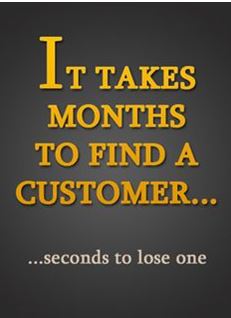Use Your Last Mile Delivery Service To Earn Customer Loyalty
By Steve MacKenzie

Cookie cutter Final Mile Delivery models will not cut it in 2018 or in the years ahead. Consider this: Every company in the last mile business, whether it is the retailer or the third party service provider, believes loyalty and retaining customers are vital to their success. But what are they really doing about it? Creating loyalty is one of the most critical strategies to retain customers and grow your business faster. It can also create a strong competitive advantage.
According to a 2016 Accenture Global Consumer Pulse Survey, even in the digital age, human interaction remains a crucial element in customer satisfaction. The study gauged the experiences and attitudes of 24,489 consumers around the world about customer services, sales and marketing, with 1,334 respondents from Canada. Here are some statistical findings:
- Nearly half (49 percent) of Canadian consumers have switched providers in a year due to poor customer service (providers included retailers, cable, phone companies, finance and other service providers)
- Once they’ve switched, 68 percent say they will not return once they have left.
- Eighty percent of Canadian respondents who switched companies said they could have been retained before switching providers.
- Only 17 percent of Canadian consumers posted negative comments online after a bad customer service experience, 11 percent less than the global average (28 percent).
- Canadians are known to be ‘silent switchers’, which means they will just leave with no opportunity for the provider to ‘make it right’.
- In the United States the estimated cost of customers switching due to poor service is $1.6 trillion.
Recommendations
Profoundly digital customers are also profoundly impatient. However, they’re also not as ‘glued’ to robotic or automated experiences as we would like to believe. To keep the loyalty of this fast changing group, companies simply can’t give them a reason to leave. That means they need to focus less on luring customers with transactional gimmicks, and more on attracting them with superior service across all channels of interaction.
The same Accenture survey indicated that 73% of consumers will choose human interaction over online capability when looking to resolve a service issue or complaint, or when seeking advice. Vendors / shippers need to choose a last mile delivery partner that will help them earn their customers’ respect; which will assist in protecting their brand and retain customer loyalty.
- Human interaction is vital and should be prompt in response to customer feedback, whether it is negative or positive. Today’s customers have become impatient due to the speed of their digital experiences. However, these same digitally savvy customers still expect human interaction to provide customer support when a solution is required. For example customers don’t expect a delivery to be dropped off at the front door when they requested a face to face delivery.
- White Glove delivery, including product placement tailored to the customer’s request goes a long way. When the driver thanks the customer for the purchase on the behalf of the vendor, it is an added bonus in gaining customer loyalty.
- Companies should offer more of a hybrid solution – online digital service along with traditional human interaction to facilitate changing customer needs. Customers become frustrated when they are required to submit a complaint online for service that falls below expectations. A human voice that is easily accessible should be the expected standard. In other words, the end customer should be able to not just reach an authorized retail representative to discuss a solution to their problem, but they become frustrated when they need to speak to several other persons in the vendor’s organization, if the issue requires more immediate escalation.
- Work with last mile delivery partners who offer convenient methods of service to meet the end customer’s expectations. 73 percent of consumers become frustrated when providers fail to offer convenience. g. Arrange for an evening delivery if it is more acceptable. When consumers become annoyed, they defect. Once providers lose a customer due to poor service, 6 out of ten times they will not get them back, and customer churn is very costly. This is where the last mile delivery provider can assist with flexibility.
- Develop and maintain Key Performance Indicators (KPIs). These should be established and agreed on between the retailer and the Final Mile service provider. Based on the needs of the customer, they (KPIs) should measure different scopes of work. Some common examples of KPIs are:
- On-Time Customer Deliveries. The number of on-time or late deliveries are more important than any other metric tracked in last mile logistics, according to industry research.
- Order Accuracy
- Customer Complaints – What is the percentage of customer complaints against the total number of deliveries
- Damage Claims – Shippers should track the number of damage claims against the total number of shipments.
It is extremely beneficial that both the shipper and the final mile service provider include quantifiable KPIs and reasonable time frames in any service agreement.
Metrics allow shippers to understand the ins and outs of last mile logistics. They provide a means of measuring the performance of last mile logistics plans against actual processes along with their associated costs. As a result, shippers can make changes to their operations to improve last mile services, through metrics. Knowing more about your customer’s last mile needs is fundamental in providing more than just the standard delivery options.
It is challenging and expensive to undertake changes to address each and every issue that may annoy customers. A path to success can be created with a focus on the experiences that have the strongest ability to negatively impact customer loyalty.



